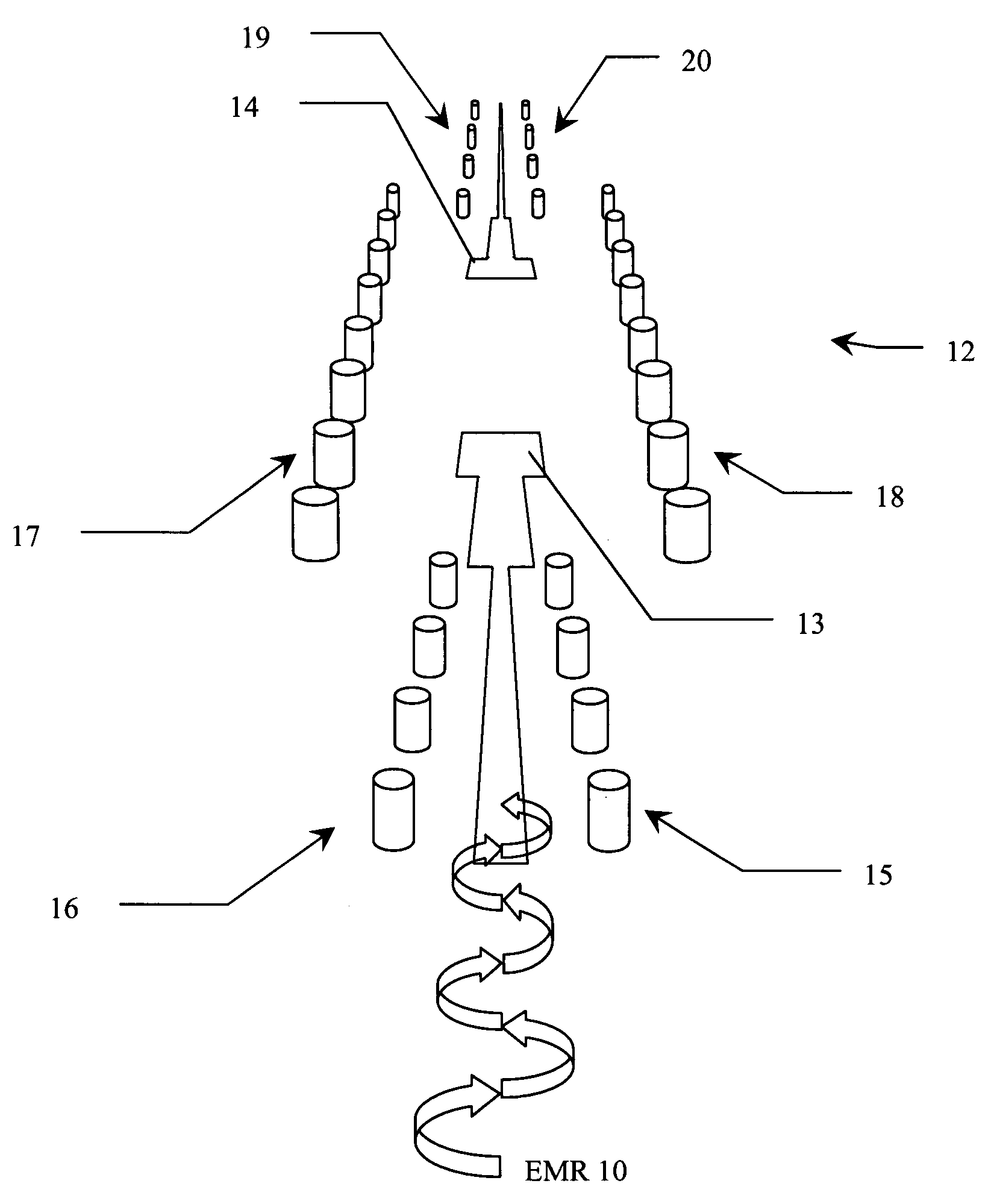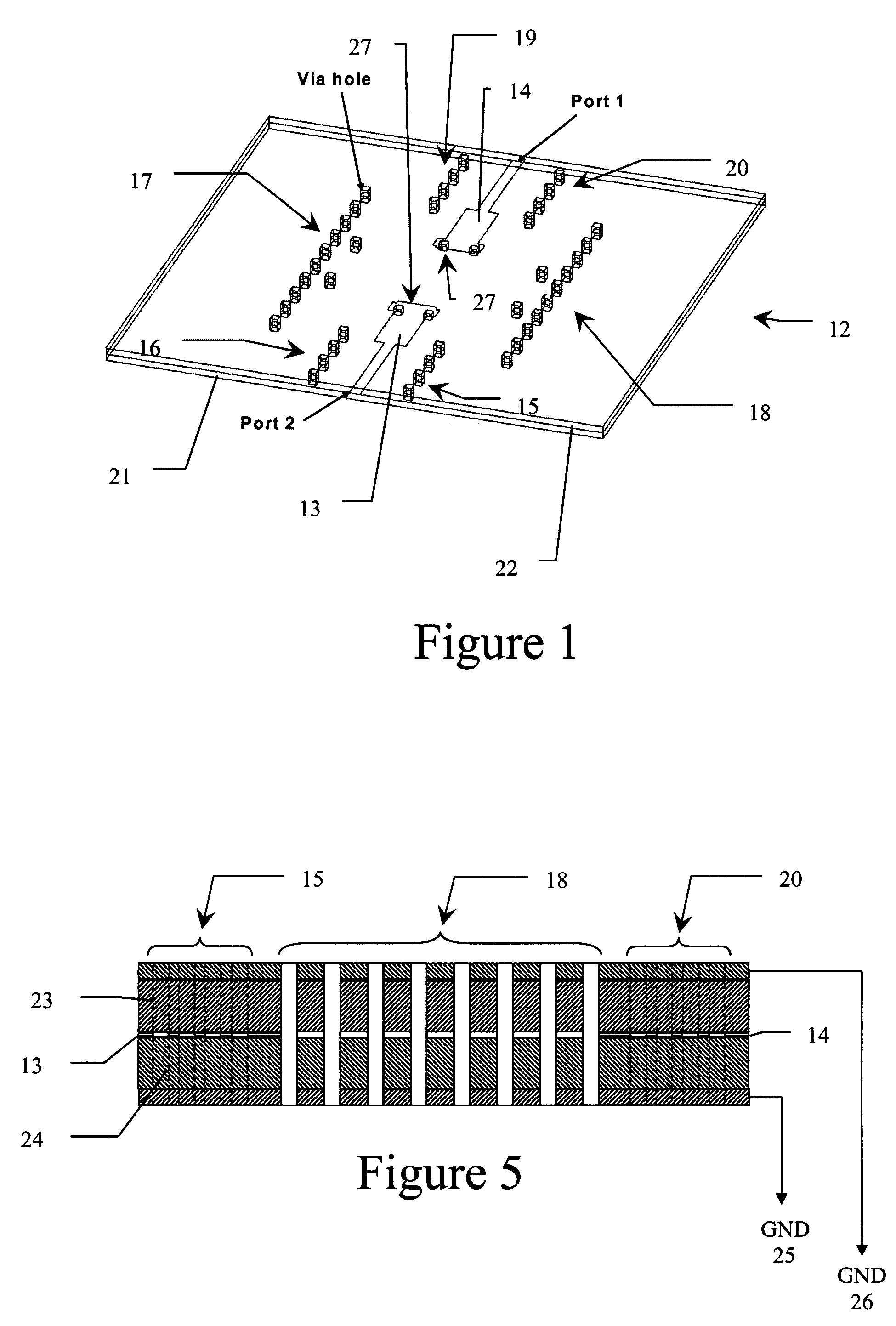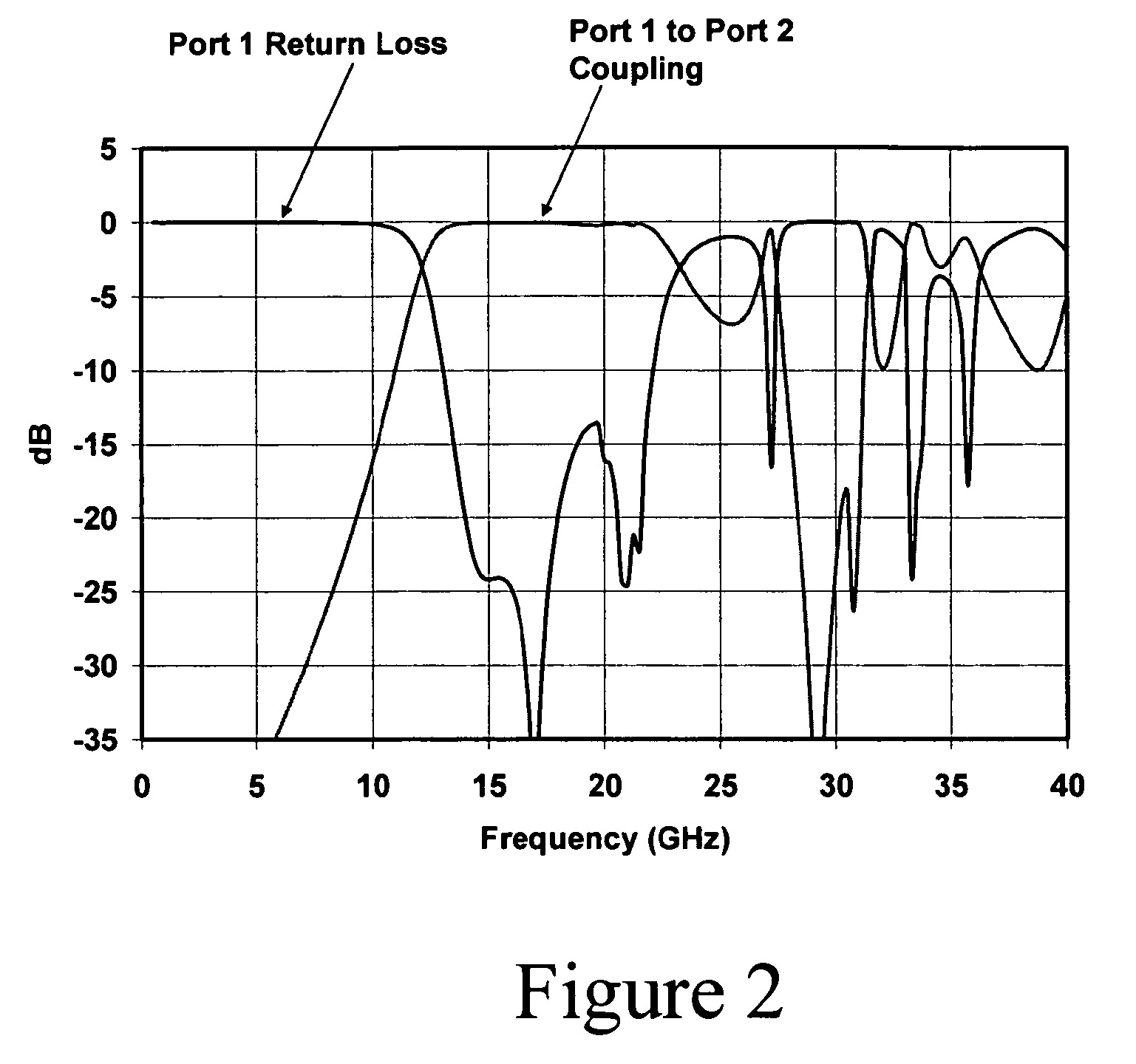Printed circuit board filter having rows of vias defining a quasi cavity that is below a cutoff frequency
a filter and printed circuit board technology, applied in the field of filters, can solve the problems of lossy lossy filter and physical largeness
- Summary
- Abstract
- Description
- Claims
- Application Information
AI Technical Summary
Benefits of technology
Problems solved by technology
Method used
Image
Examples
Embodiment Construction
[0012]Glossary. As used in this description and in the claims, the following terms shall be construed to have the following meanings:
[0013](1) RF frequency bands are referred by their standard nomenclatures, as follows:[0014](a) “L-band” means 1-2 GHz;[0015](b) “S-band” means 2-4 GHz;[0016](e) “Ku-band” means 12-18 GHz;
[0017](2) “antenna” means a structure for radiating or receiving electromagnetic waves;
[0018](3) “low frequency” means frequencies below the operating frequencies of the antenna to be protected;
[0019](4) “cavity” means a metallic enclosure with two openings for RF energies to pass in and out;
[0020](5) “quasi-cavity” means a structure that acts as a cavity without necessarily requiring a contiguously surrounding wall;
[0021](6) “quasi-waveguide” means structure that acts like a waveguide without necessarily requiring a contiguously surrounding wall;
[0022](7) “via-hole” means a hole formed in a printed circuit board and filled with a conductive material; and
[0023](8) “cu...
PUM
| Property | Measurement | Unit |
|---|---|---|
| frequency | aaaaa | aaaaa |
| frequency | aaaaa | aaaaa |
| frequency | aaaaa | aaaaa |
Abstract
Description
Claims
Application Information
 Login to View More
Login to View More - R&D
- Intellectual Property
- Life Sciences
- Materials
- Tech Scout
- Unparalleled Data Quality
- Higher Quality Content
- 60% Fewer Hallucinations
Browse by: Latest US Patents, China's latest patents, Technical Efficacy Thesaurus, Application Domain, Technology Topic, Popular Technical Reports.
© 2025 PatSnap. All rights reserved.Legal|Privacy policy|Modern Slavery Act Transparency Statement|Sitemap|About US| Contact US: help@patsnap.com



